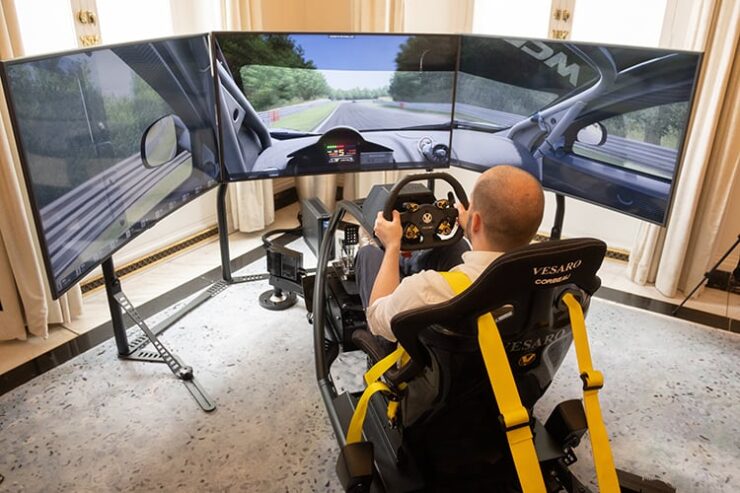Table of Contents
Starting sim racing can seem intimidating at first, but it’s an exciting and rewarding hobby. You get to experience the thrill of driving without leaving the comfort of your home. This guide will walk you through the essential steps to get started and provide useful tips to help you navigate your way through this new experience.
It can seem intimidating at first, but you can quickly learn sim racing with the right guidance and enjoy the thrill of driving from the comfort of your home.
Step 1: Understand What Sim Racing Is
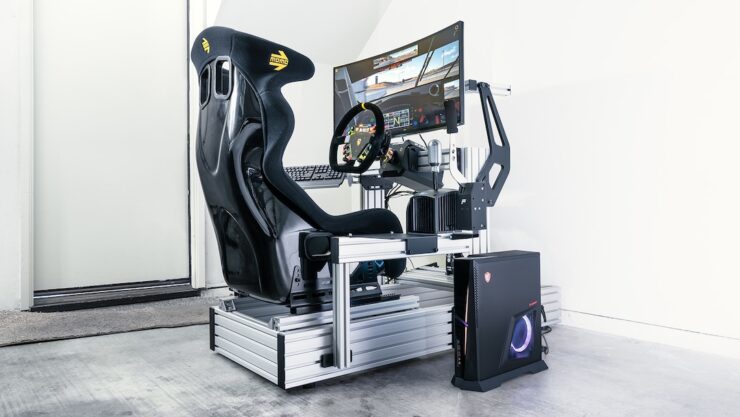
At its core, sim racing is virtual motorsport. Drivers control vehicles on digital tracks with the aim of achieving the most realistic experience possible. It goes beyond simple games. The goal is to make it feel as close as possible to the real thing, from how the car behaves to how the track affects performance.
The realism comes not just from the software but from the gear used to enhance the experience. Many drivers invest in high-quality hardware that replicates real-world driving, such as wheels and pedals. This ensures that each race feels authentic, giving drivers a genuine sense of immersion.
Step 2: What You Need to Start Sim Racing
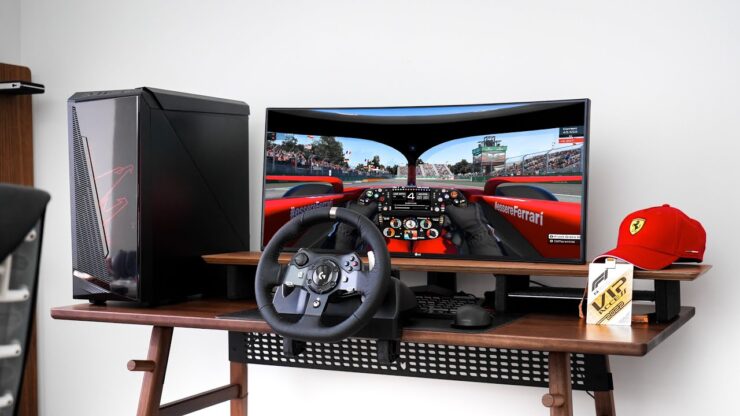
Starting does not have to cost a fortune. You can begin with a basic setup and build on it as you improve. Here are the basic elements to get you started:
1. A Gaming PC or Console
The first thing you need is a device to run your racing software. A PC is often the most popular choice because it supports a wider range of games and hardware. If you’re just beginning, a console such as a PlayStation or Xbox can work well too. Just make sure that it meets the requirements of the racing games you plan to use.
2. Racing Wheel and Pedals
You can start with a gamepad or controller, but for a better experience, it’s best to get a wheel and pedals. A good racing wheel will give you more precise control, making it feel like you are in a real car. Many beginners opt for brands like Logitech or Thrustmaster, which offer quality at an affordable price.
3. Racing Seat or Stand
While not essential, a good seat or stand can improve comfort, especially for longer sessions. A sturdy racing seat keeps everything stable and adds a professional feel to your setup. If a full seat is out of budget, a stand for your wheel and pedals can make a big difference too.
4. Racing Games
There are several games to choose from depending on what type of racing interests you. Some focus on road cars, while others might replicate real motorsport series like Formula 1. Start with one that suits your preference and budget. There are both free and paid options available.
Step 3: Learning the Basics

It’s easy to get overwhelmed when first starting out. But you can quickly learn sim racing by focusing on the basics. Begin with getting comfortable with your hardware and understanding how cars react to different conditions on the track. Start with easier races or even practice laps until you gain confidence.
There are many resources available to help new drivers, including tutorials, YouTube videos, and forums. For a more structured approach, you can learn sim racing through an online course that guides you step by step. This helps to ensure that you build solid driving skills right from the beginning.
Step 4: Choose the Right Game
Picking the right game is an important part of your setup. Different games offer different types of vehicles, tracks, and levels of realism. Some popular options include:
- Assetto Corsa: Known for its excellent physics engine and wide selection of mods.
- iRacing: A subscription-based service that’s popular for competitive racing.
- Project Cars 2: A mix of realism and accessibility, making it a great starting point.
- Gran Turismo Sport: Available on PlayStation, with a strong focus on online racing.
When choosing, consider how realistic you want the experience to be. Some games are more casual and forgiving, while others are focused on simulation and can be quite challenging.
Step 5: Start Practicing
The key to improving is practice. Focus on mastering your car before jumping into more challenging tracks or races. Here are some tips to help:
- Start slow: It’s better to begin with slower cars and simpler tracks. Gradually move to faster vehicles and more technical courses as you improve.
- Learn braking and cornering: Two of the most important skills in driving. Practice braking smoothly into turns and accelerating out of them. Understand how your car’s weight affects its handling.
- Use online resources: Don’t be afraid to watch guides or read tips from more experienced drivers. There’s always something new to learn.
- Practice different conditions: Not every race happens in perfect weather. Get comfortable with wet tracks or varying levels of grip.
Step 6: Set Realistic Goals
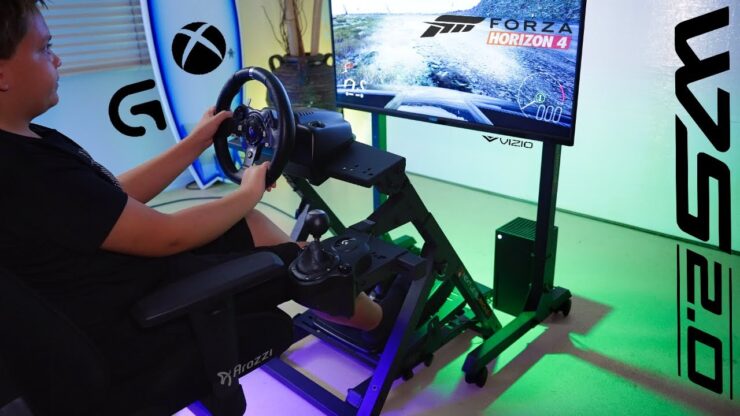
When starting, it’s easy to get frustrated if you’re not immediately fast. Instead, focus on setting realistic goals. For example:
- Complete a full race without crashing
- Learn a track’s layout without using driving aids
- Improve your lap time by a few seconds each session
As you hit each goal, you’ll naturally become more confident and skilled. Over time, those small improvements will add up.
Step 7: Advanced Hardware and Upgrades
Once you’ve spent some time with your basic setup and feel comfortable, you may want to start upgrading. Moving from an entry-level wheel to a more advanced model can make a big difference. High-end wheels offer better feedback and more precision, improving your overall control.
Other upgrades to consider include better pedals with a clutch and brake pressure simulation, or even a more immersive seat setup with motion capabilities. Many drivers choose to build their setups gradually as their skills improve and their passion grows.
Step 8: Entering Competitions
When you’re ready for more of a challenge, entering competitions can take your experience to the next level. Many games have in-built leaderboards or online championships. There are also more formal leagues you can join.
Competing against others can push you to improve and give a new level of excitement to each race. It’s also a great way to connect with others who share your passion for driving.
Conclusion
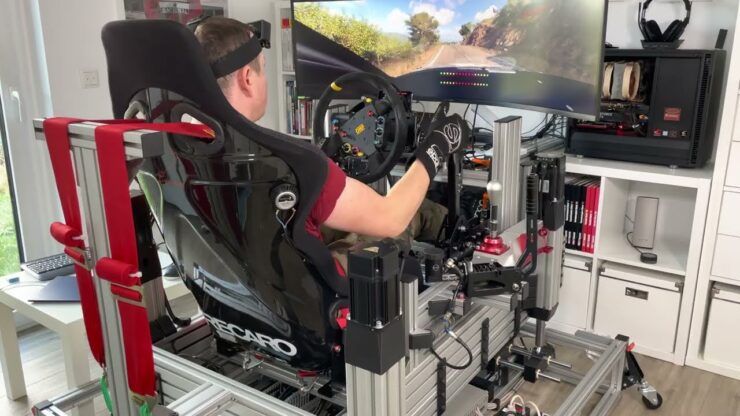
Starting sim racing might seem like a lot to take in, but it’s an incredibly fun and rewarding hobby. Whether you’re in it for the thrill of competing or simply to enjoy the drive, there’s something for everyone.
Your journey starts with that first race. So grab your gear and get ready for the thrill of virtual motorsport!

